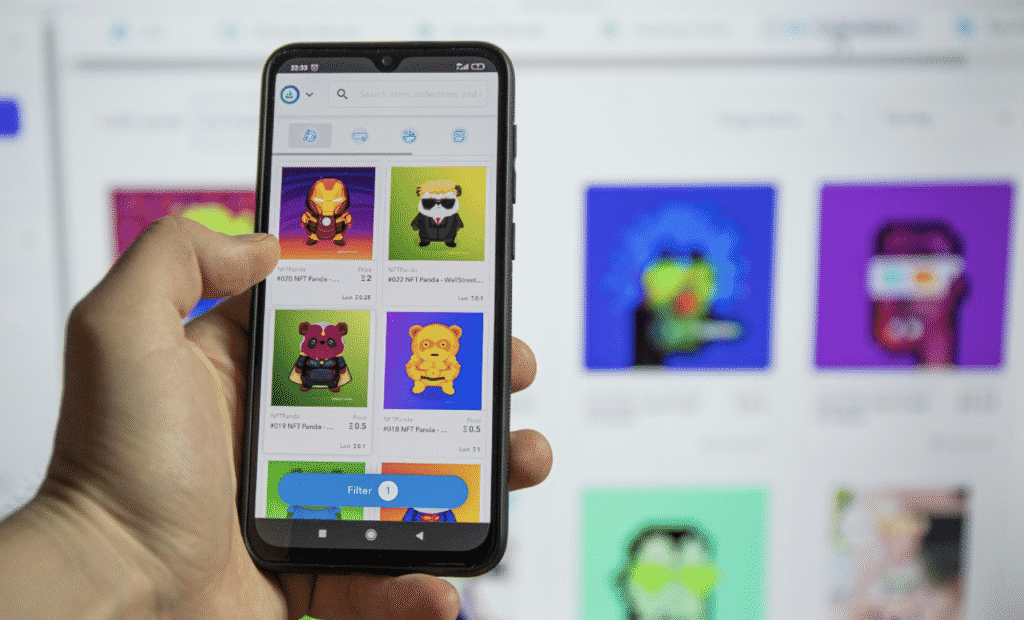Introduction
Non-fungible tokens, or NFTs, are well-known, and you might have observed that some of these NFTs are being sold for large sums of money. Even yet, many people are unfamiliar with NFTs and are contemplating whether or not to invest in them. , or the process of establishing an NFT, is also a secretive process for NFT investors.
How Does NFT Minting Work?
It all comes down to making an executive decision of how and on what platform you want to mint your NFTs. Simple yet effective steps are: choosing the right blockchain network, connecting the digital wallet, and proceeding with the minting operation.
Learning how to mint NFT is essential and can be simple with the correct tools regardless of whether you wish to own an asset like a work of art or generate NFTs to sell or trade. Another aspect you’ll need is some crypto experience or basic understanding of the blockchain technology.
What Are the Benefits of Minting an NFT?
• Decentralized Ownership: When you create an NFT, you’re agreeing to let numerous people hold a piece of the digital asset.
• Trade Unique Digital Assets: Not only can the astrists trade, buy, or sell stakes in assets, but in doing so they will get a percentage of the profits in the future.
• Store and Hold Value: You can keep the asset’s price in a concrete medium, akin to a physical coin with a specified value concentration. Furthermore, because of the secure nature of the blockchain and the lack of NFTs, digitally retaining value is generally deemed secure.
How to Mint NFTs
1. Create a Unique Asset
Determining the type of asset you want to develop is the first step in minting NFTs. Everything from digitized trading cards to in-game weapons, there’s a whole universe of digital goods out there.
2. Buy Tokens
Make sure to get cryptocurrencies that are well-suited to your specific blockchain network. As a matter of fact, since some wallet services and marketplaces only function with specific others, blockchain will determine the e-wallet services and marketplaces you choose.
3. Use Non-Custodial Wallet
In order for users to keep their funds, they will have to use a digitally connected e-wallet. A cryptocurrency wallet is a program that enables users to connect and communicate with the cryptocurrency network and thereby their accounts.
In order to eliminate the interference of middlemen or third-party organizations and have full authority over the NFT they have minted, users need to have a non-custodial wallet. Although they are more appropriate, you do not have control over your individual keys.
4. Select and Add Assets to an NFT Marketplace
The next step is to choose an NFT marketplace; there are many to choose from. Proficient NFT marketplaces like Rarible, Mintable, and OpenSea are all suitable for NFT minters.
Users may be charged minting fees by some NFT marketplaces, and there may also be costs associated with setting up a profile, gas fee, posting an NFT, and trading on the platform.
5. Add Assets to the NFT Collection
Although each marketplace has its own set of rules for generating NFTs, the concept is almost the same: Choose the artwork you wish to mint, fill in a few details, and finish the process by posting the NFT to your collection. You can list, market, and sell your NFTs once you have them in your collection.
NFT Minting – Latest Trends
Minting Several Assets
Users can mint a variety of commodities, including artifacts, games and gaming paraphernalia, media, and sporting items. Enjin is renowned for providing business entrepreneurs and organizations with a variety of tools to mint several assets.
QR Code Distribution
In order to allocate their NFTs, creators might utilize one or more QR codes. Artists and crypto collectors can manually select a few users for a free giveaway of NFTs and crypto-based assets.
In-app Trading
The rise in interest over Metaverse can be attributed to DApps. The user must create an account, fill up personal information such as their name, photos, and descriptions, and connect their digital wallets. Users will be able to swiftly mint bespoke coins and souvenirs in the future.
Conclusion
Although the mechanism for minting NFTs differs somewhat from one platform to another, the basics remain the same: you’ll need a distinctive digitized asset, NFTs, a non-custodial wallet, and the NFT marketplace as well.
The main usage of blockchains and cryptocurrencies is for minting, selling, and trading NFTs. Trading cryptocurrency with ChainTechSource is another option to get in. Bitcoin, Solana, Ethereum, Litecoin, Dogecoin, and Cardano, are among the more than two dozen cryptocurrencies that can be traded.
